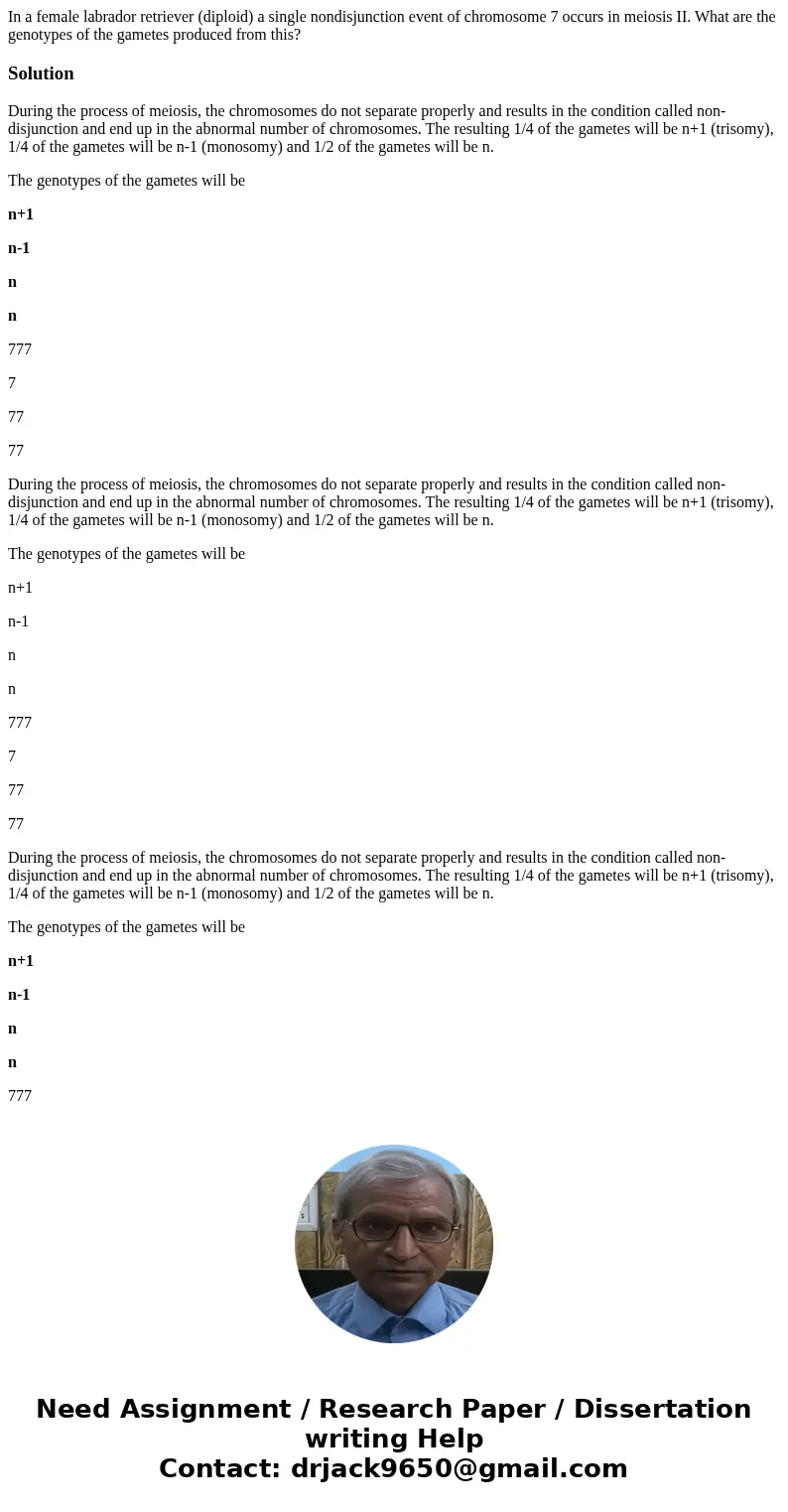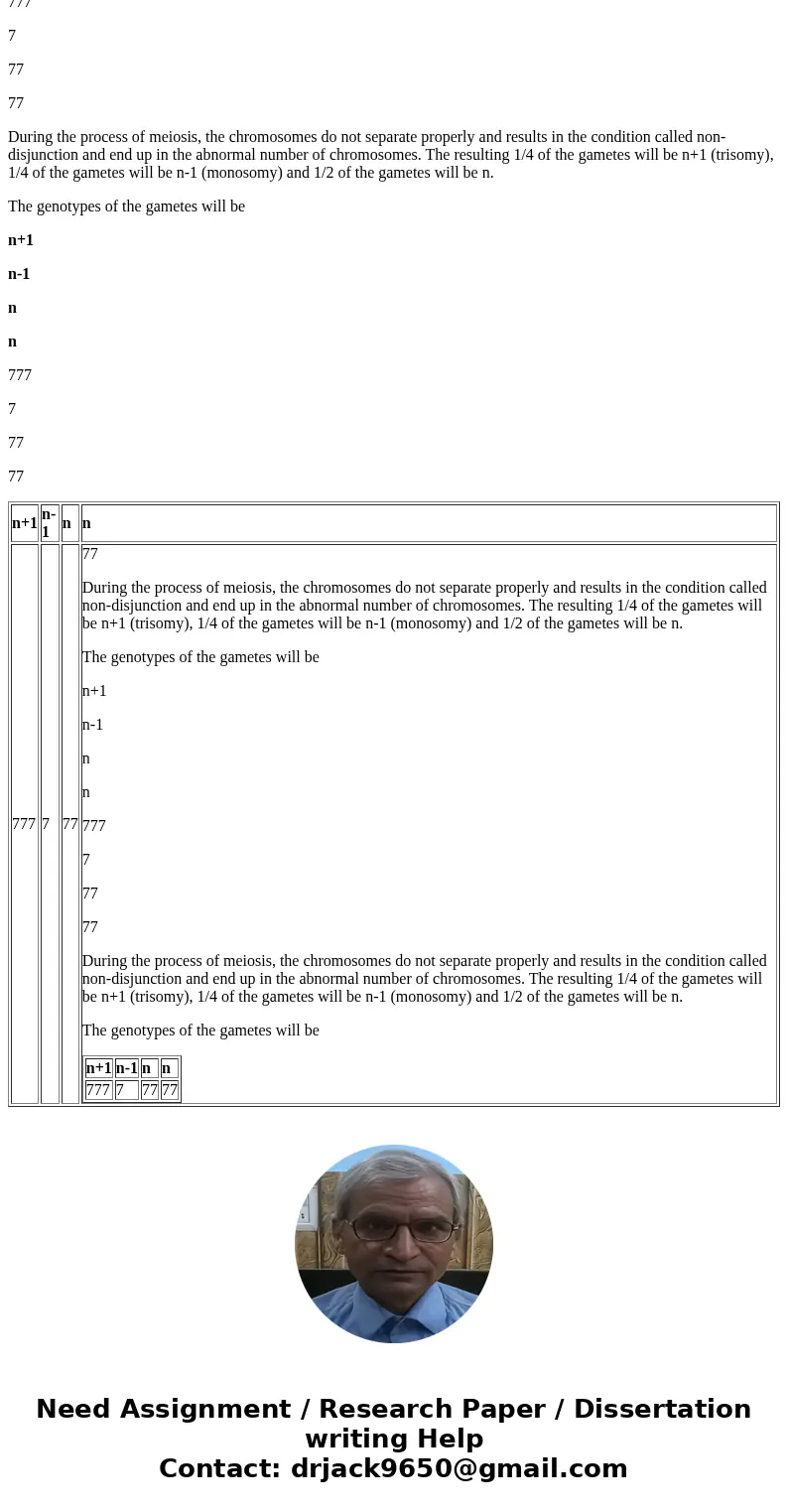In a female labrador retriever diploid a single nondisjuncti
Solution
During the process of meiosis, the chromosomes do not separate properly and results in the condition called non-disjunction and end up in the abnormal number of chromosomes. The resulting 1/4 of the gametes will be n+1 (trisomy), 1/4 of the gametes will be n-1 (monosomy) and 1/2 of the gametes will be n.
The genotypes of the gametes will be
n+1
n-1
n
n
777
7
77
77
During the process of meiosis, the chromosomes do not separate properly and results in the condition called non-disjunction and end up in the abnormal number of chromosomes. The resulting 1/4 of the gametes will be n+1 (trisomy), 1/4 of the gametes will be n-1 (monosomy) and 1/2 of the gametes will be n.
The genotypes of the gametes will be
n+1
n-1
n
n
777
7
77
77
During the process of meiosis, the chromosomes do not separate properly and results in the condition called non-disjunction and end up in the abnormal number of chromosomes. The resulting 1/4 of the gametes will be n+1 (trisomy), 1/4 of the gametes will be n-1 (monosomy) and 1/2 of the gametes will be n.
The genotypes of the gametes will be
n+1
n-1
n
n
777
7
77
77
| n+1 | n-1 | n | n | ||||||||
| 777 | 7 | 77 | 77 During the process of meiosis, the chromosomes do not separate properly and results in the condition called non-disjunction and end up in the abnormal number of chromosomes. The resulting 1/4 of the gametes will be n+1 (trisomy), 1/4 of the gametes will be n-1 (monosomy) and 1/2 of the gametes will be n. The genotypes of the gametes will be n+1 n-1 n n 777 7 77 77 During the process of meiosis, the chromosomes do not separate properly and results in the condition called non-disjunction and end up in the abnormal number of chromosomes. The resulting 1/4 of the gametes will be n+1 (trisomy), 1/4 of the gametes will be n-1 (monosomy) and 1/2 of the gametes will be n. The genotypes of the gametes will be
|


 Homework Sourse
Homework Sourse